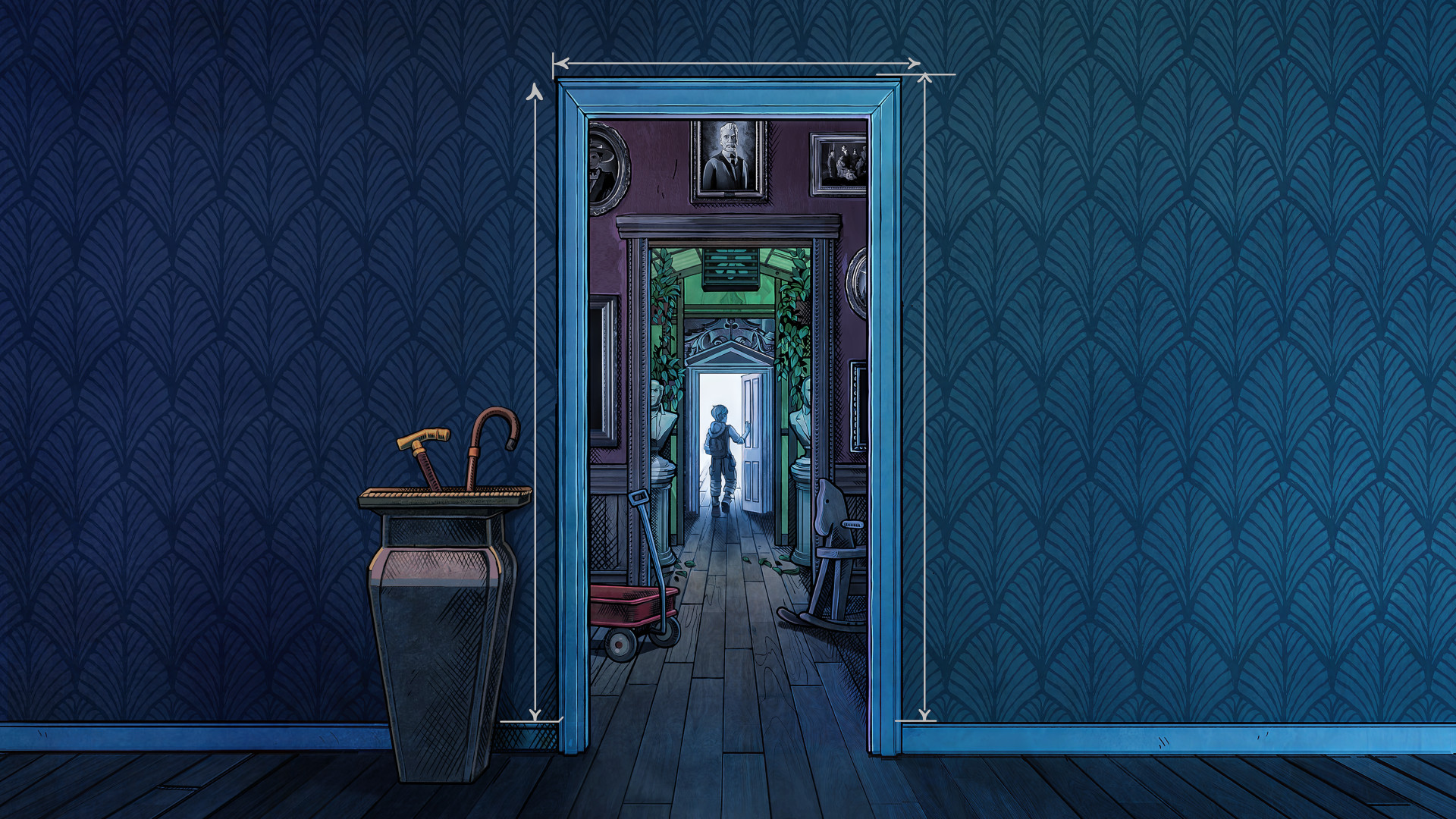Best family board games for 2025, reviewed by experts
Grab budget-friendly games that everyone can enjoy
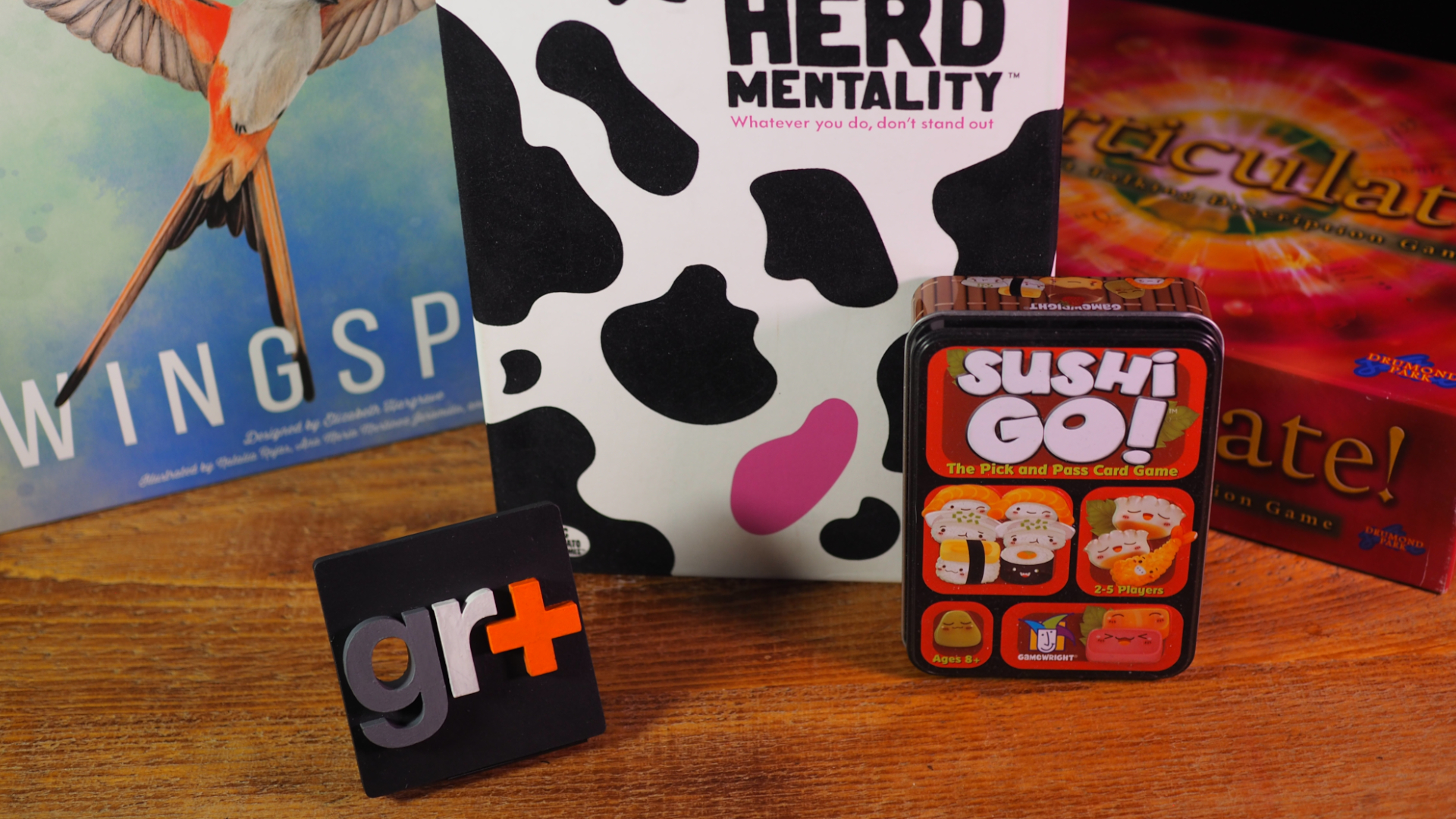
If you're fed up of slogging through hours of Monopoly, it's time to break out the best family board games. There's no shortage of choice these days, and all of them leave old-timers like Clue in the dust. That's why the GamesRadar+ team and I have narrowed things down with this list of top-tier board games for families.
Alongside suggestions for parties, lazy afternoons at home, and everything in-between, you'll find recommendations here that'll suit all skill-levels or budgets (though you can check in with the 'how to choose' section for advice if you're not sure what you want). The best family board games get everyone involved, so even reluctant players should be happy to try them out. Oh, and don't assume they'll bore you to sleep if you're a tabletop veteran; I'd argue that these are some of the best board games overall.
To make sure we're recommending the best of the best when it comes to family board games, this list is made up of options our experts have had extensive hands-on experience with. If it doesn't wow the GamesRadar+ team, it doesn't get on the list… and because we review board games for families as a living, that bar is pretty high. You can find out more in the 'how we test' section further down the page. Not sure what you're in the mood for? Check out the 'how to choose' guide below.
Recent updates
March 26, 2025: This guide has been updated with a revised FAQ section and further advice on how to choose family board games.
Quick list
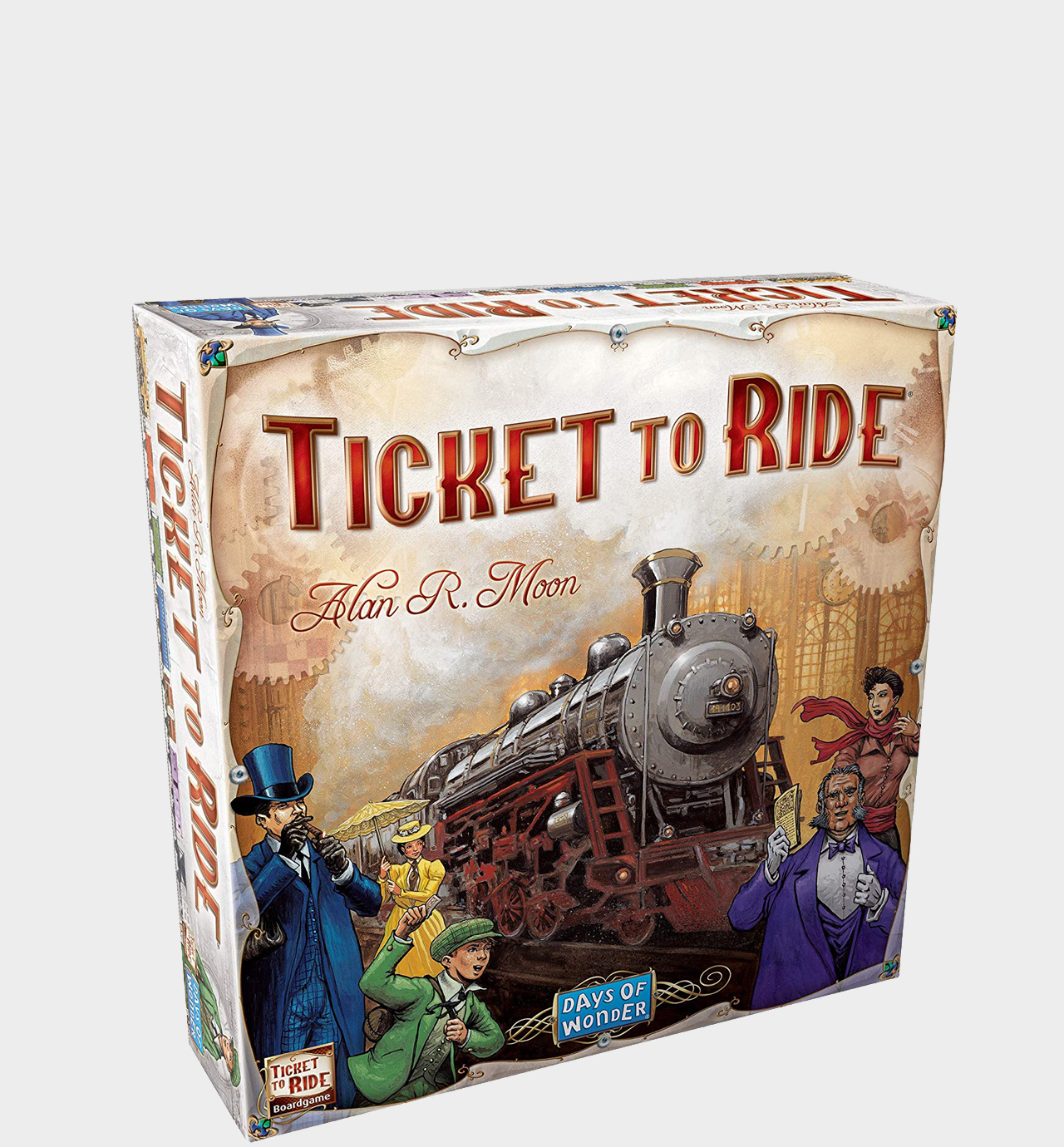
There's nothing quite like Ticket to Ride. Easy to learn but spellbinding nonetheless, it challenges you to build a train line across continents. Although you can sabotage rivals by crossing their route, you don't have to - the fun lies in racking up as many points as possible. That makes the experience pretty zen on the whole. In fact, playing it helped us get through lockdown.
Read more

You won't find a better ice-breaker than this. Even though you're trying to collect eight cows (e.g. points) for your 'herd,' it's not really competitive. It's also straightforward enough to be enjoyed by all ages. That's because you'll be answering questions like "what's the best sauce," and you score if you're in the majority. Seeing as it's about what you think others will say, Herd Mentality is perfect for starting conversations.
Read more
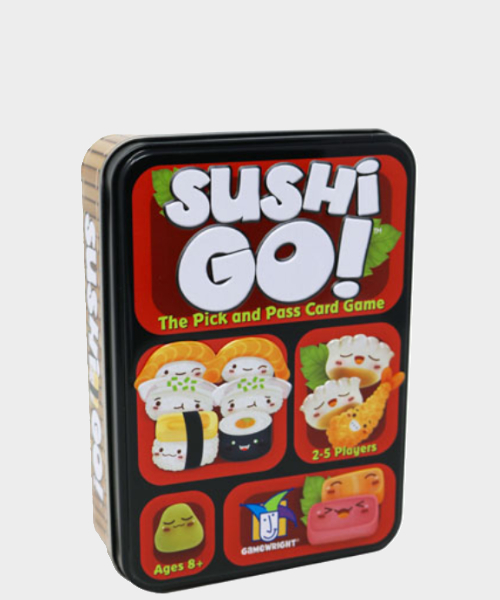
For families with children (and even ones that are all grown-up, actually), Sushi Go is an essential purchase. Quick, straightforward, and endlessly replayable, it's the sort of thing kids can grasp quickly… but has a decent amount of strategy under the surface. Seeing as it comes in a portable tin and doesn't need much space, it's great for traveling as well; you can sling it in a bag and take it on vacation without any trouble.
Read more
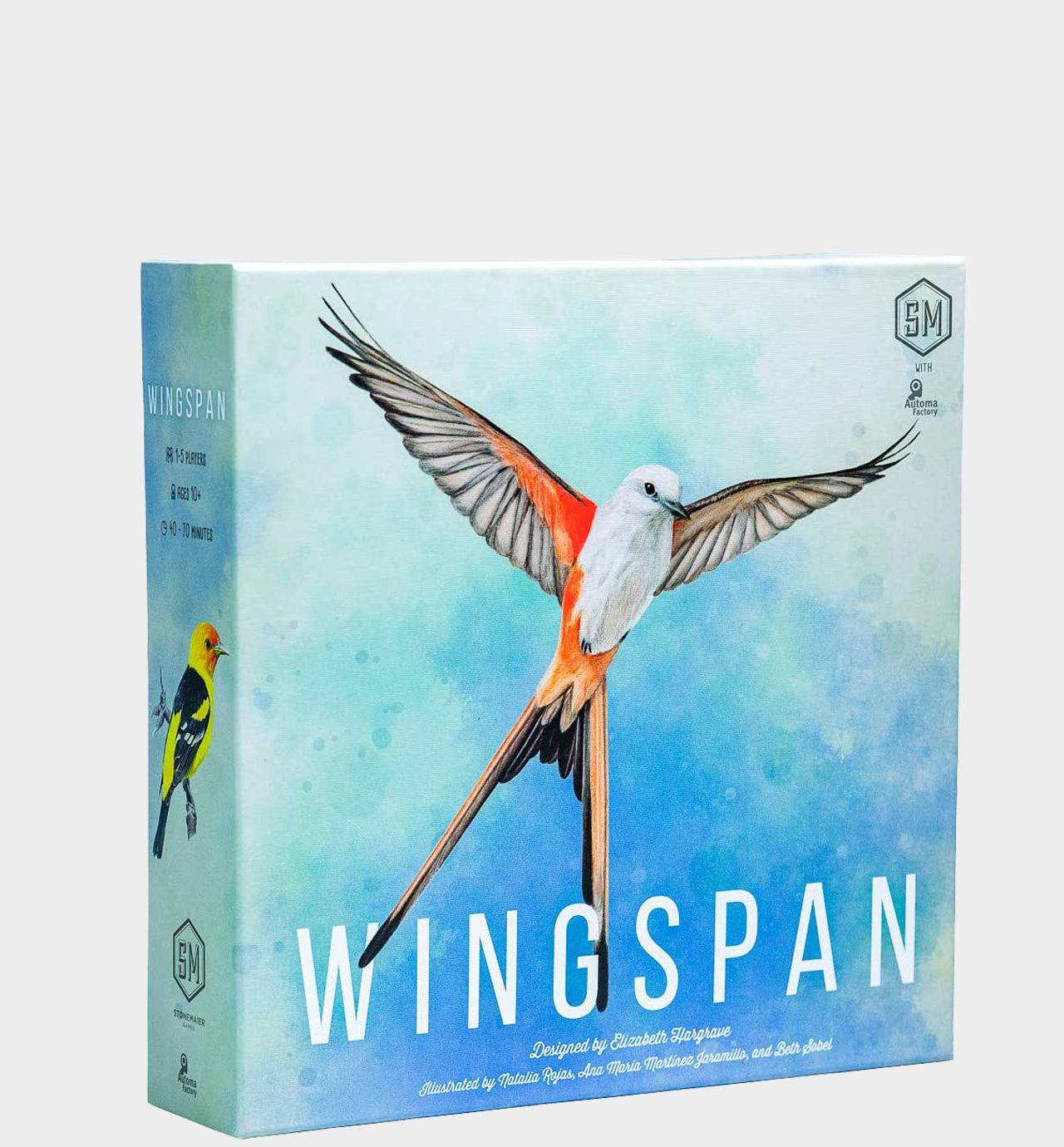
In terms of enchanting family board games, Wingspan takes the cake. Challenging you to build the best wildlife reserve, it's oddly satisfying; you collect birds with special bonuses so that you can collect yet more birds, and so on. The lack of direct competition helps with this engrossing loop, and players will try to beat each others' scores instead. When combined with beautiful artwork, it's a real treat for older families.
Read more
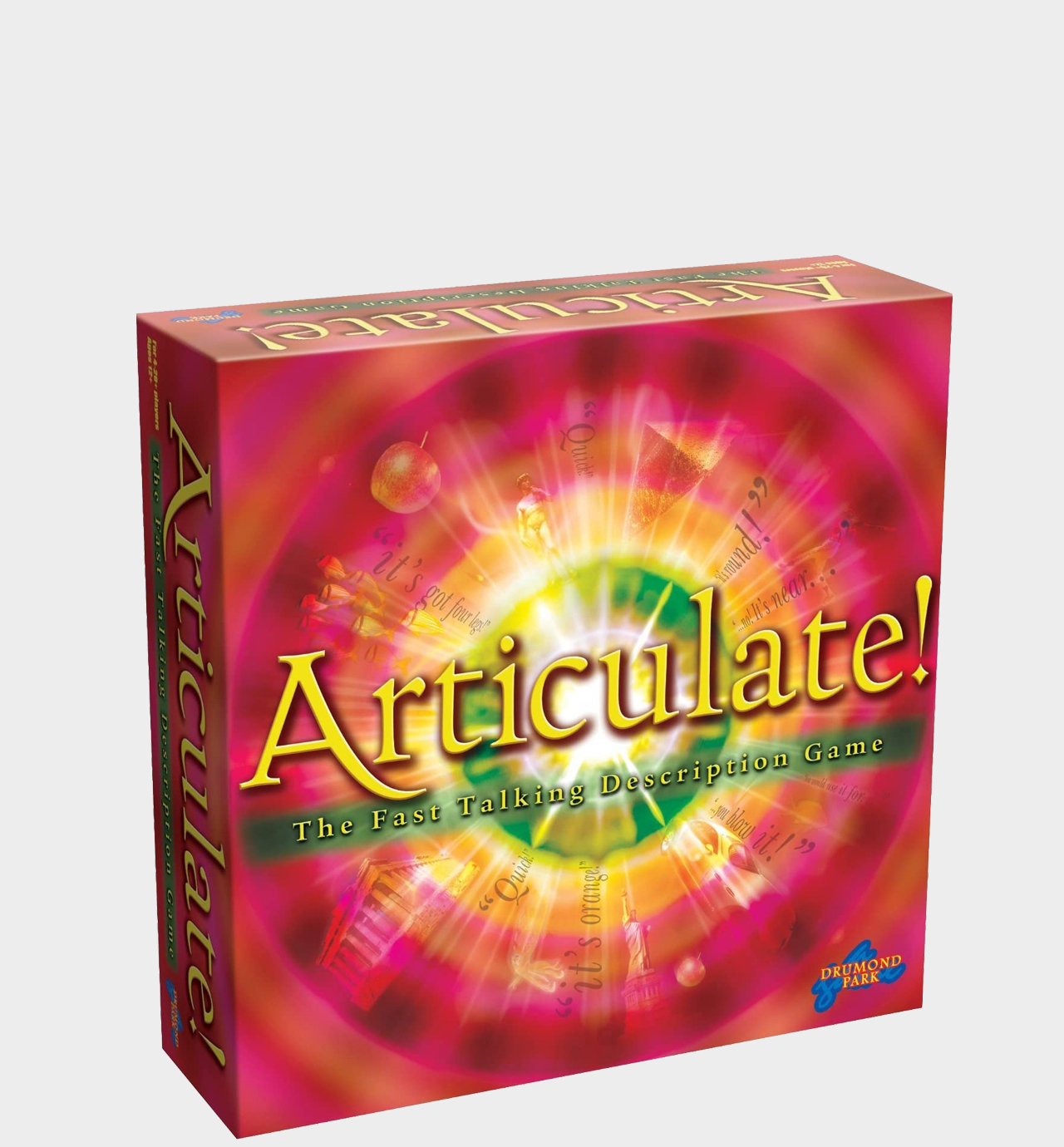
Most trivia board games go out of date before long, but not Articulate. Relying on more general knowledge instead, it's still relevant years after it was published. That means anyone can give it a go, too; you don't need to be a font of niche facts. Plus, it having such a massive player count (so long as you're divided into teams, you can have 20 or more people involved), it's ideal if relatives are descending en masse.
Read more
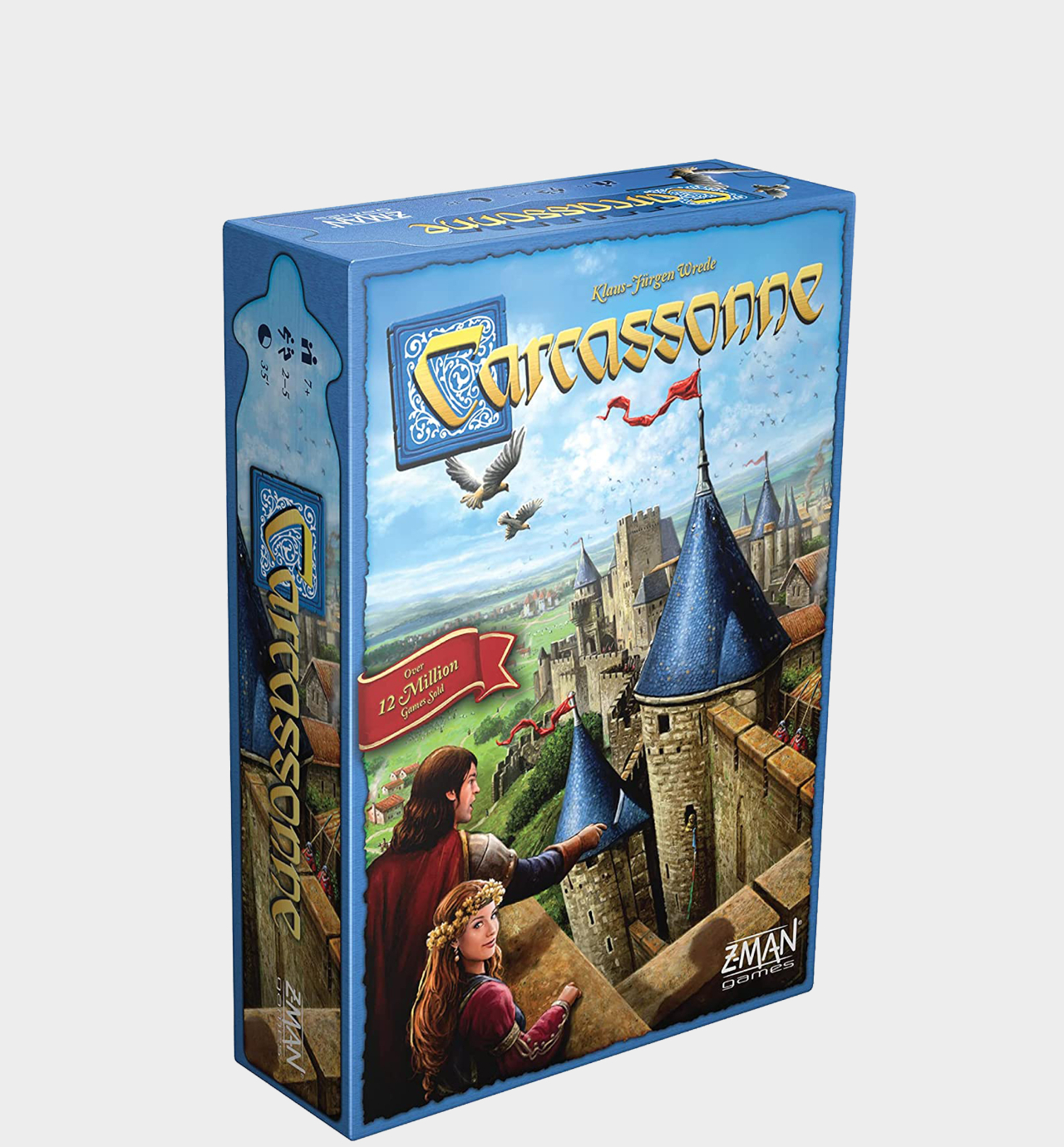
This easy-going game has been going strong for more than 20 years, and it's not hard to see why; Carcassonne is accessible, endlessly replayable, and satisfying in equal measure. That's the reason it's often labelled as the perfect 'gateway game' for anyone hoping to graduate from Monopoly or Clue – it's a step up in complexity and tactics, but not so much that beginners will feel lost.
Read more
Best family board game overall
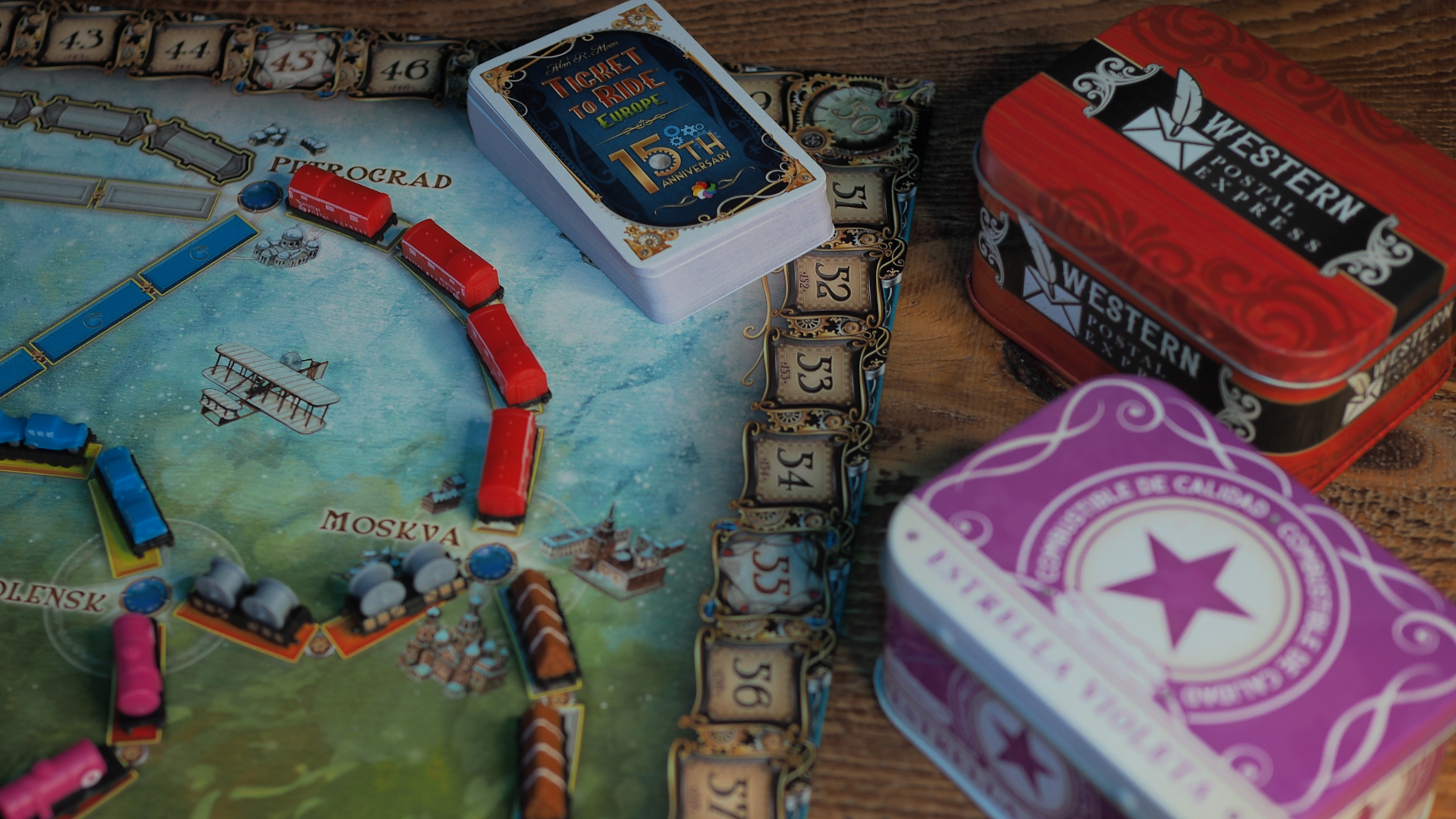
Specifications
Reasons to buy
Reasons to avoid
No matter whether you want to entertain the kids on a lazy Sunday or you're feeling sleepy post-Christmas dinner, the last thing you want is a complicated game that'll tax your brain. This is why Ticket to Ride is so brilliant. While there are tactics involved, it's a much more laid-back experience than other family board games on this list. It's the kind of thing you can learn in 15 minutes or less, too, so everyone will be able to join in regardless of their experience level.
Finally, it's competitive but not to the point you'll fall out – players should still enjoy themselves even if they lose.
✅ You want something easy that's still fun: If you're looking for an accessible game that won't bore you after a couple of sessions, Ticket to Ride fits the bill. Even though you can learn it in 10 - 15 minutes, it's tactical enough to keep you from checking your phone.
✅ Your family is new to board games: Ticket to Ride is often dubbed a 'gateway' game because it balances accessibility with more complex mechanics than you'd find in something like Clue.
❌ You want a challenge: This isn't the most strategic game out there, even if it offers challenges of its own. Those looking for something to truly test their mettle will be disappointed.
❌ You'll play it a lot: I can say from experience that Ticket to Ride will lose its shine if you play too often. While it got my family and I through pandemic lockdown thanks to digital sessions, we eventually became over-familiar with its routes.
Features & design: Ticket to Ride whisks us back more than a hundred years to a time when top hats were considered cool, and you're a businessperson hoping to earn their fortune on those new-fangled steam locomotives. Players score points by creating train routes across North America, Europe, or wherever your copy of the game is set.
Easy enough, right? Sort of – winning isn't so straightforward. Because certain routes are worth more than others, the race is on to claim them before anyone else can.
Differently-colored train cards are critical for that. You need sets (ranging between two and half a dozen cards each) to place your tokens on a route, and these are drawn either from a face-up market available to everyone or blind from the deck. That means others can figure out what you're gunning for and act first if you're not careful. This gives Ticket to Ride a push-your-luck edge.
Yes, it's a little more cutthroat than you might have expected. But hey, Ticket to Ride is pretty enough for you to let it off. Even the standard version comes with 3D train tokens, and the cards provide pops of color that leap off the table. The board itself is rendered in a quaint turn-of-the-century style as well, so this board game for families has personality to spare.
Gameplay: Because everyone is scrambling to earn cards and win routes (many of which cross over with one another), Ticket to Ride draws you in by the scruff of your neck despite it being so laid back on the whole. This also makes it a satisfying personal challenge, even if you end up losing; there's something pleasing about completing a long and complicated route, especially if you have to go around a rival's line. Indeed, needing to take the long way round may be frustrating in the heat of the moment, but coming up with a workaround is rewarding.
A tense but incredibly rewarding experience that opens itself up to strategy and logic
Tabitha Baker, Managing Editor of Hardware
Speaking of which, all that jostling for space injects an undercurrent of strategy. Which routes should you prioritize? And once you've finished your current batch, should you take any more? It's a fun conundrum to wrestle with, because failure to complete routes before the end will see those points taken off your total.
Then there's the question of which routes you choose. Do you risk building a longer line for maximum value? Or should you finish a bunch of shorter routes to score quickly? It's a similar dilemma to Jaipur, one of the best card games, and will keep you invested for a while.
Just be careful not to overdo it. You might learn Ticket to Ride's routes if you play it too much (thus allowing you to guess what other players are working on right away), and that robs it of some magic. Although the game got me and my extended family through the pandemic lockdown because we were able to 'play' together virtually via webcam, we did eventually become overfamiliar with Ticket to Ride so needed a break before getting it out again.
Criteria | Notes | Score |
|---|---|---|
Game mechanics | This game doesn't overcomplicate things, and that's its greatest strength. It's easy to understand, but you still have plenty to think about during each match. | 4/5 |
Accessibility | Ticket to Ride is blissfully straightforward, but it has slightly more to it than many family board games. | 4/5 |
Replayability | You'll eventually learn this game's routes, and even though that doesn't sink it entirely, it does reduce the fun factor. | 3/5 |
Setup and pack-down | There are going to be plenty of toy trains to pick up at the end, but it's generally not too taxing. | 4/5 |
Component quality | Quality card stock, a hard-wearing board, and plastic train icons mean that this is a very good looking game. | 5/5 |

"Yes, Ticket to Ride has a competitive edge. But not to the point its players fall out. Aside from an occasional gold rush over routes everyone wants, it's a refreshingly sedate puzzle you work on by yourself. There's a layer of strategy chugging away beneath all that, though. Deciding when to push your luck or play it safe gives it the compelling hook it needs, so even though it's not the most complex board game for families, there's plenty enough here to engage with." Read more: Ticket to Ride review
Best family party board game
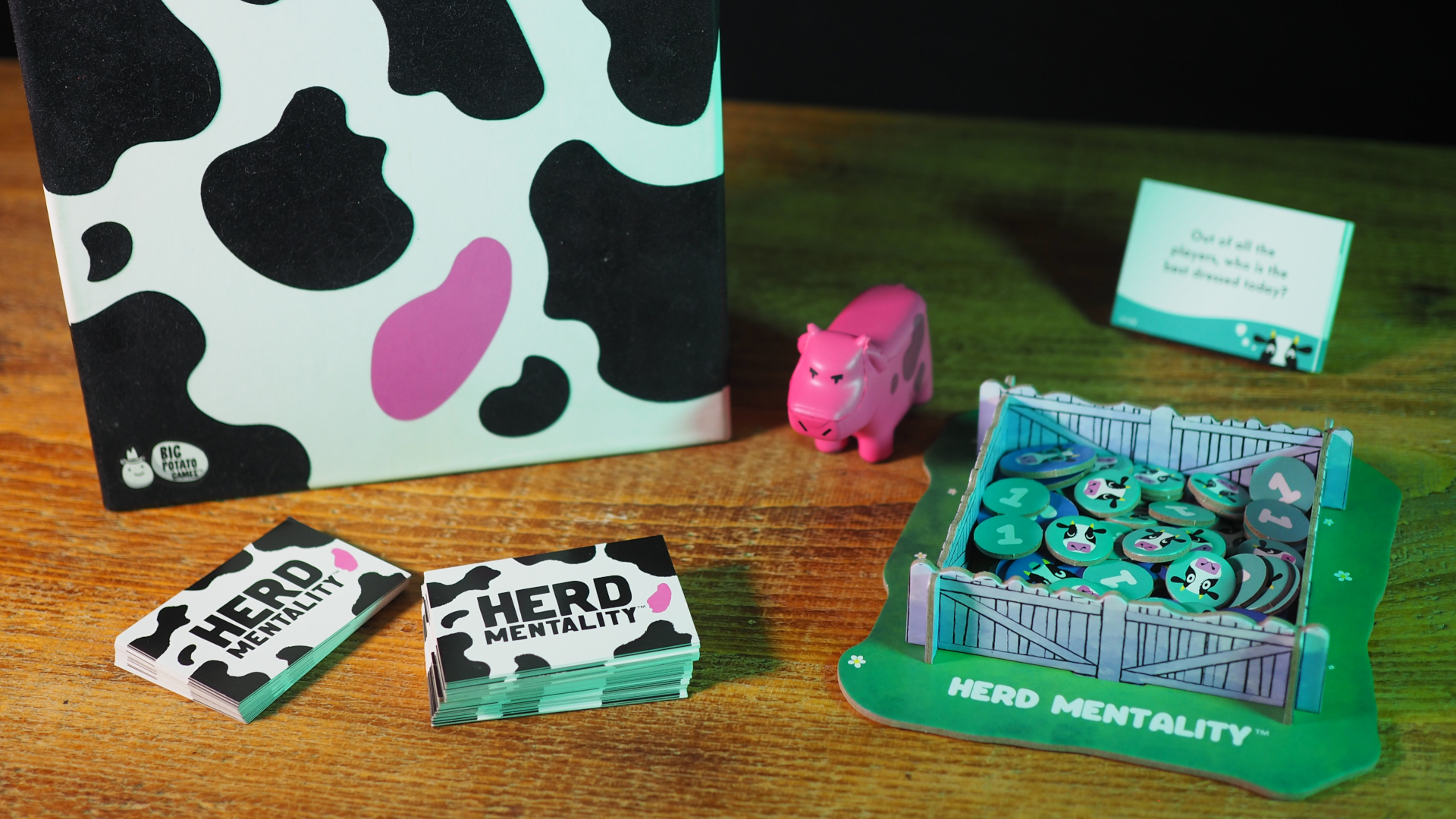
2. Herd Mentality
Our expert review:
Specifications
Reasons to buy
Reasons to avoid
If my family is getting together and wants to play something, I'll always break out Herd Mentality first. It's the perfect board game for families that don't even like board games; it's dead easy to understand, is low-pressure, and doesn't require any kind of specialist knowledge. It won't ever become outdated, either – this one hinges on what your group thinks instead of your ability to remember obscure trivia.
Seeing as it accommodates so many players (up to 20), it's also a solid pick if you have a particularly large clan of relatives.
✅ You're looking for an easy-going, light-hearted game: It doesn't get more laid back than this, so Herd Mentality is perfect if you're hoping to kick off a games evening or need a low-effect choice. Catering to so many players is a bonus, too.
✅ You're playing with people who don't usually get involved: There's absolutely no pressure to Herd Mentality, and there isn't a 'right' answer to any of its questions either. That means it's great for those who aren't a fan of being in the spotlight.
❌ You want something strategic: There's very little by way of strategy with this one, and the only 'tactic' you'll need is the ability to second-guess what your family might write down each round.
❌ You don't know the other players well: Are you hoping to make a good impression by playing this with a loved one's family that you've just met, perhaps over Christmas? You may struggle, because it's much easier if you have an idea of how everyone will answer.
Features & design: Herd Mentality was designed by the company behind many of the best party board games, and that means it's wonderfully silly. Rather than posing trivia questions to make you think, it throws out bangers like "what is the best sauce?" You'll then scribble down your answer.
There's no 'right' answer, of course. Instead, you're trying to match what you think everyone else is going to say. You earn points if you're in the majority, and anyone in the minority gets penalized with the squishy pink cow of shame. This is basically a stress toy, so at least you can work through your angst if you get it.
While we're on that subject, the theming is absolutely on point. Each player is trying to build their 'herd' by collecting eight cows (e.g. point tokens), and all of these are amusingly bizarre. They are also taken from a central, grassy pen rather than a boring case, so full points for effort. When combined with the fuzzy black spots on its box, Herd Mentality is more than a little quirky.
Gameplay: This is a game that can be explained in 10 seconds flat, and that's a huge bonus if you're trying to corral rowdy family-members. There's next-to-no downtime either, as everyone is writing down or sharing their answers together.
Crucially, the fact that there's no 'correct' answer is helpful for those who don't play board games, or avoid them because they aren't sure what to do. It's also perfect if you have loved ones that are uncomfortable about joining in, or just prefer to watch – you'll find them starting to get involved from the sidelines by chipping in with what they think. My mom certainly does, and she never plays family board games with us.
It isn't the deepest board game for families, but Herd Mentality makes up for that light touch with breezy gameplay and a ton of silly fun
Benjamin Abbott, Tabletop & Merch Editor
Even if everyone disagrees, that can be fun in and of itself. You'll all joke about why you're right, or discuss someone else's surprising answer. That makes it a good opportunity to learn something about each other and open up new discussions that get everyone talking.
What's more, it's hugely replayable. No two groups are the same and will all answer differently. Herd Mentality is a family board game with plenty of longevity behind it as a result.
Criteria | Notes | Score |
|---|---|---|
Game mechanics | Herd Mentality is a lot of fun, and it'll fill a very happy half-hour. It isn't the deepest game, though, so more experienced players may find it too straightforward. | 3/5 |
Accessibility | Literally anyone can play this game, and it's dead easy to learn. | 5/5 |
Replayability | Because there's no 'right' answer (and everyone's responses will be different), Herd Mentality can be rolled out again and again without losing its shine. You may eventually get tired of the formula, but not for a while. | 4/5 |
Setup and pack-down | All you need to get going with this one is a handful of cards, pens, and cow tokens. That makes setup a doddle, though the box's storage solutions aren't the best (I find that the pieces often come loose). | 4/5 |
Component quality | I'm always impressed by how sturdy Herd Mentality's tokens and 'pen' (e.g. token holder) are, not to mention that delightfully squishy pink cow. The box's velvet patches are a surprise bonus. | 5/5 |

"Herd Mentality manages to be exceedingly silly yet still involves a satisfying element of social strategy, especially if you know the group you’re playing with well. Side note: you’ve got to give props to Herd Mentality for supporting up to 20 players, this will definitely come in handy during big family-togethers."
Best family card game
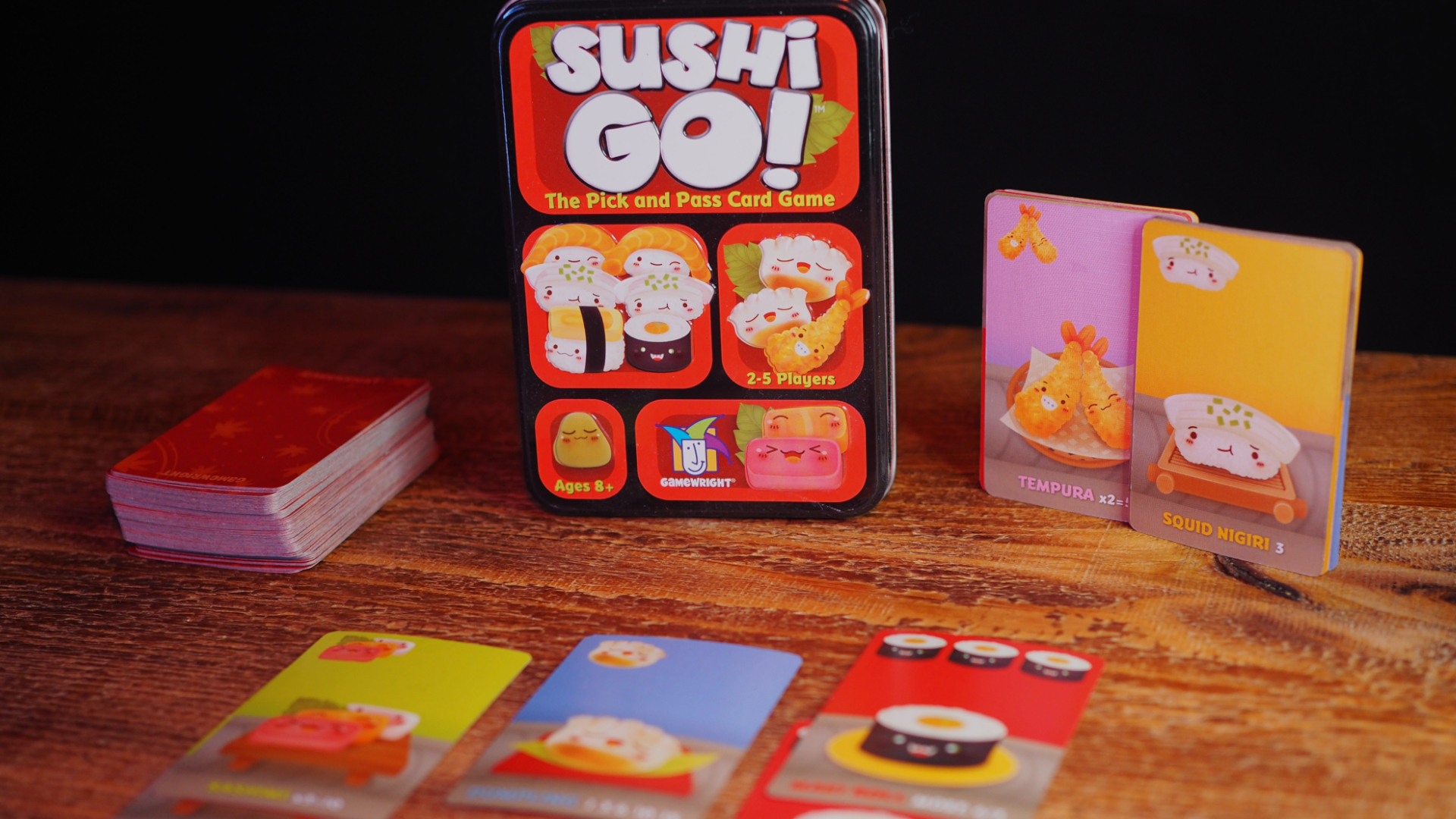
3. Sushi Go!
Our expert review:
Specifications
Reasons to buy
Reasons to avoid
No matter whether you're looking for family board games you can take with you on the go or something your kids will like, Sushi Go ticks those boxes. Besides being incredibly easy to learn, it doesn't take up much space in play or packed away. That makes it perfect for slinging in a backpack.
It doesn't take long to finish a match, either. Playing with younger gamers or the chronically impatient? This won't get boring… and it won't make you want to tear your hair out if little ones insist on rematch after rematch.
✅ You want something quick: Because matches of Sushi Go rarely last more than 15 minutes, it doesn't outstay its welcome. It also lives in the sweet-spot so far as children's attention-spans go.
✅ You want an on-the-go game: If you like to take family board games with you on vacation or out and about, Sushi Go is perfect. Besides coming in a little tin that won't take up much space, it only requires a small table to lay your cards on.
❌ You want a game for very young kids: Although it's very straightforward, this may still be too much for particularly young children. Planning a few goes ahead is crucial, as is adding up your score at the end.
❌ You want something very strategic: It requires some tactics, but this isn't an overly deep family board game. Whether that's a plus or minus depends on what you're looking for.
Features & design: Sushi Go is different every time you pick it up. It works in a very similar way to Exploding Kittens, with players taking a card and passing the rest on… except here you need to build a selection of dishes that earn points over the course of three rounds. Whoever racks up the biggest score wins.
Some of these cards are worth a lot right away, others provide multipliers, and yet more require you to collect a set for bigger payouts. This means that there are multiple approaches you can take on your path to victory. (Just don't forgot about Puddings, which are only scored at the end of the game and may tip your score over the edge.)
The art accompanying all this is delightful. Each dish has been given a cartoon makeover, which makes even me - someone who is notorious for avoiding seafood - want sushi.
Gameplay: The elevator pitch for Sushi Go is simple, but don't think it's shallow as a result. Because you'll be looking through your hand of cards before passing it to the next player (and can obviously tell what others have picked), smart cookies can sabotage their rivals by taking the cards someone else needs. It's deliciously devilish, and most will pick it up quickly.
The game's rapid-fire nature makes it a winner with little ones that don't have much patience, too. Matches don't take long and are easy to set up, so you can happily run an encore without much trouble.
Not that this is only for kids, of course. It'll be a hit with all ages, and is a great warm-up game before moving on to something with more depth. I have many fond memories of playing this with friends or family at parties, so it usually gets thrown into my bag if a get-together is due.
Criteria | Notes | Score |
|---|---|---|
Game mechanics | It's not a particularly complicated game, but you'll still feel invested as you gradually build a world-beating score. | 3/5 |
Accessibility | Unlike some family board games, this one doesn't require much explanation at all – you can be playing in no time. | 5/5 |
Replayability | Every match of Sushi Go is different because you'll always be dealing with a different hand of cards – and different priorities as a result. | 4/5 |
Setup and pack-down | Seeing as it only includes a deck of cards that are stored in a sturdy tin, Sushi Go is very easy to organize. | 5/5 |
Component quality | These cards feel as if they're built to last, and that storage tin should keep them safe when not in use. | 5/5 |

"Sushi Go is a quickfire gem that won't get boring any time soon. It's light, breezy, and charming enough to turn you into an instant fan. Plus, the fact that it doesn't have a board makes it a great travel option for gamers on the go."
Best family strategy board game
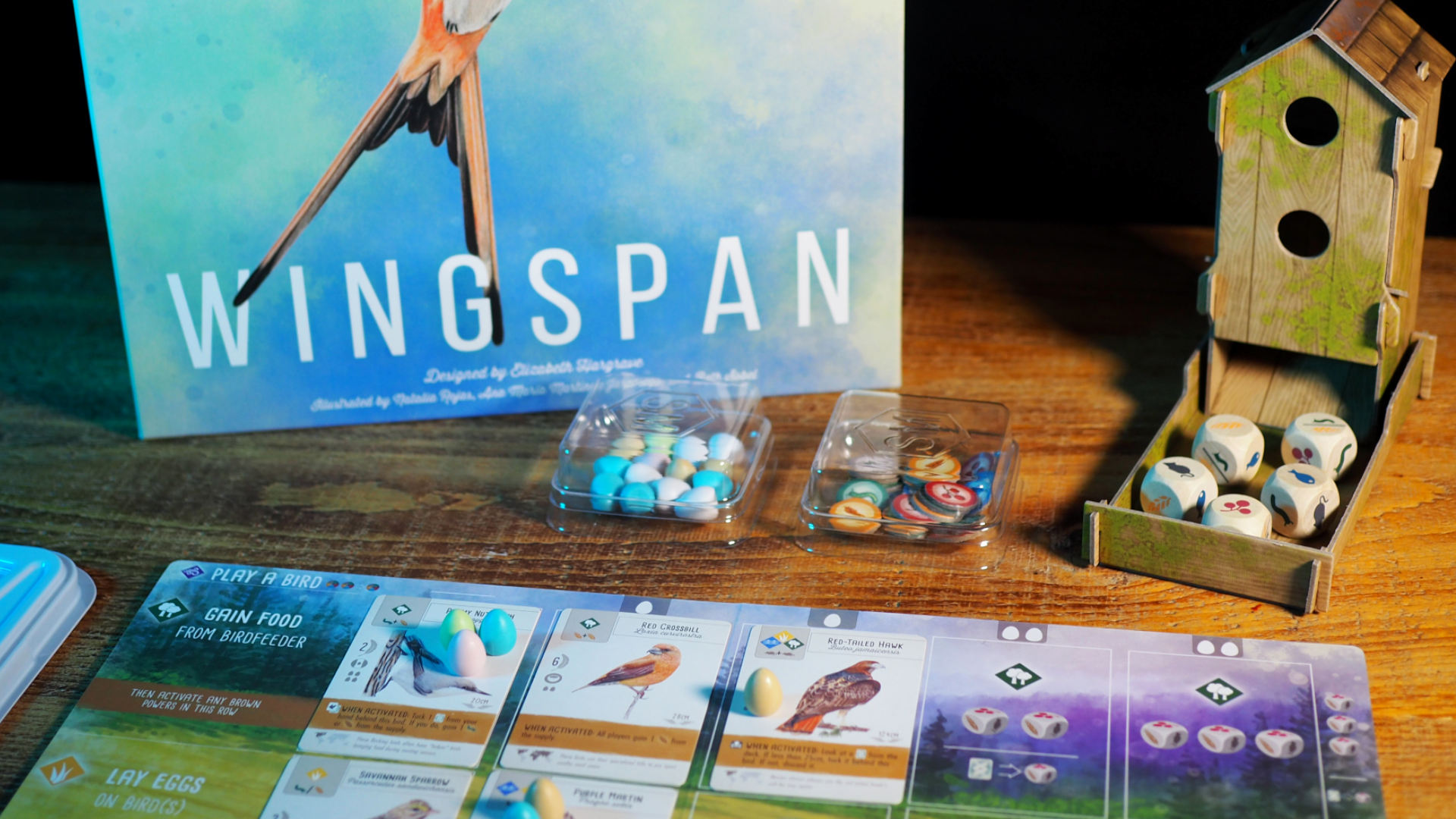
Specifications
Reasons to buy
Reasons to avoid
In board gaming circles, Winspan is as close to a household name as you can get. The fact it walked away with one of the industry's most prestigious awards – the Kennerspiel des Jahres – in 2019 gives a clue as to why. With meticulously balanced mechanics that offer numerous ways to win accompanied by heaps of replayability, it's the sort of family board game you can make your own.
Because there isn't just one way to win, Wingspan is deceptively deep as well. It's the kind of experience you're still likely to be enjoying years from now; the extensive deck and varied card abilities encourage a wealth of strategies.
✅ You enjoy asymmetric board games: Even though everyone's working on similar goals, players are able to use whatever strategy they like to get there. If that sort of freedom appeals to you, Wingspan should impress.
✅ You love nature: Thanks to utterly beautiful watercolor artwork and a wealth of facts about the birds you're trying to collect, Wingspan will delight the animal lovers out there.
❌ Experimenting with playstyles sounds like a chore: Because there are so many approaches you can use in Wingspan, you may not get the most out of it if you don't experiment a little.
❌ Complex rules frustrate you: Wingspan isn't the easiest game to explain. If you're hoping for something you can pick up and play right away, steer clear.
Features & design: The aim of Wingspan is to attract as many different birds to your nature reserve as possible using resources those species will like. These feathered friends may then give you special abilities that are used to attract even more birds, netting you points. Rinse and repeat for a thoroughly lovely time.
It's not just a scramble to the finish line, though. There are numerous ways to earn points, and each round has objectives of its own. This makes for a smart, layered experience you can properly dig into.
The art is equally high-quality. Watercolor paintings of each bird are just the tip of the iceberg; Wingspan also includes delightful egg tokens and a bird box dice tower to use when rolling for resources. The game may be a little more expensive than others on this list, but it feels every bit as premium as the price tag would suggest.
Gameplay: Steadily increasing tension is Wingspan's secret weapon. You get fewer actions to use each round, so even though mistakes are easily forgiven early on, players will have to be a lot more careful as the endgame draws near. You can also start to guess at your rivals' scores as time goes on thanks to shared objectives, so the excitement only builds with each turn.
Because there isn't just one way to win, this is a deep game you're still likely to be enjoying years from now
Benjamin Abbott, Tabletop & Merch Editor
Still, it's not what I'd call stressful. Because everyone is working on their own boards, and there's a distinct lack of 'aggressive' moves to mess with another player's progress, it's not the kind of atmosphere that'll cause upset. If anything, it gives you the freedom to explore different tactics without fear of being undermined.
In much the same way, you won't feel thwarted by randomness here. There's an absurd amount of agency on tap because you can mix and match card effects as you see fit, allowing you to create resource-gathering engines that reward different playstyles. This ups the replayability in a big way, allowing you to revisit Wingspan for months to come without growing tired of it.
Criteria | Notes | Score |
|---|---|---|
Game mechanics | Due to a clever blend of engine-building and slowly increasing tension, Wingspan is a masterclass of design that quickly sinks its talons into you. | 5/5 |
Accessibility | The main downside to Wingspan is learning it. This isn't a complicated game by any means, but it can be overwhelming at first. | 3/5 |
Replayability | Thanks to its many cards and abilities, Wingspan has longevity to spare. You can play it numerous times and not have the same experience twice. | 5/5 |
Setup and pack-down | This game isn't a headache to lay out or put away, even though everyone has their own board. However, I can see those plastic eggs getting easily lost during pack-down. | 4/5 |
Component quality | Although Wingspan is a little more expensive, the components reflect that with a suitably high quality. The bird feeder dice tower and plastic eggs are a very nice touch. | 5/5 |

"Affording varied play styles, Wingspan is a delightful game of feathered engine building. It's not the most competitive feeling game, but with steadily increasing tension, heaps of goals to weave into your strategy, and some oh-so satisfying combos this is one of the most replayable and satisfying freeform asymmetric games out there." Read more: Wingspan review
Best family trivia board game
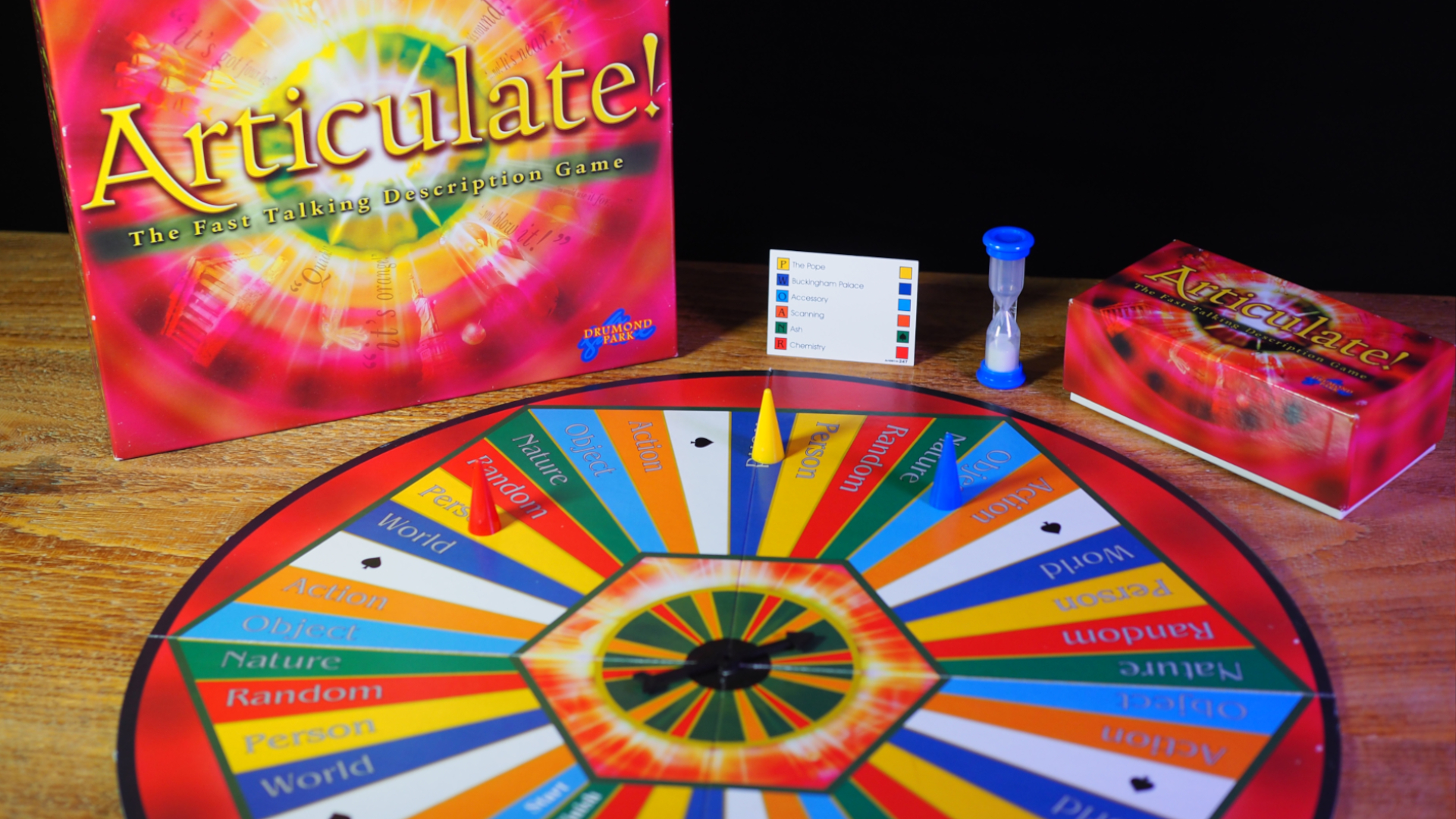
5. Articulate!
Our expert review:
Specifications
Reasons to buy
Reasons to avoid
If you'd rather avoid a free-for-all around the table, Articulate is on the money. It puts you into teams and is playable with 20 or more people, making this one of the best cooperative board games for those with a big family.
Its brand of trivia doesn't go out of date either, so Articulate can be relied upon for years to come. Because these categories are suitably broad, even the trivia-averse won't feel lost.
✅ You want an accessible team game: This is an incredibly easy game to understand, and you're working in teams, so even those who aren't regular board gamers should feel at home.
✅ You have lots of players: Because Articulate can be played with 20 or more people, nobody has to be left out.
❌ You struggle with pressure: Seeing as someone needs to be the 'teller' for each team every round, those who dislike the spotlight may be uncomfortable with this one.
❌ You want deep strategy: There isn't really any sense of tactics for Articulate beyond deciding what to do when you use the spinner. (Should you push opponents back a space, or go forward yourself?)
Features & design: Rather than having you rattle off a stream of questions, Articulate is more like charades. After splitting into teams, a member of your group draws a card. They then have to describe whatever is listed on the card without saying those words (so anyone describing 'Washington D.C.' might yell "capital of the USA"). If the team guesses correctly, you move on to the next card – and so on – until 30 seconds is up. The amount you get right dictates how many spaces your team's token moves along the board. First to the finish line wins.
While this is simple enough, the board adds a wrinkle to proceedings. Each space dictates which category you'll be using next (ranging from Geography to Action), and some let you either move ahead or push your rivals back a space.
I just wish the components were as spicy. Articulate is a case of 'all work, no play' in terms of its design; everything is perfectly functional, yet bland.
Gameplay: Thanks to its simple premise and accessible rules, anyone can get involved with Articulate. You don't even have to be a trivia boffin, either – success relies on how well you can describe something, not random titbits. When combined with a broader focus (it trades topical references for something more generic that most people should be able to recognize), it's stayed relevant years after publication. This isn't a family board game that'll show its age a decade down the line.
Due to its accessibility and the enormous player count, Articulate will work for board game fans and non-gamers alike
Benjamin Abbott, Tabletop & Merch Editor
OK, so it won't win any awards for strategy. I wouldn't call it pulse-racing either unless you hate being in the spotlight. But that simplicity is Articulate's trump card. Everyone can get involved, no matter their age or interest. It's great as a co-op game too, because all be chiming in with suggestions on your team.
If you vibe with it, you'll be able to keep playing for years as well. Articulate is buried beneath cards carrying multiple words each (not to mention numerous categories), so you're unlikely to hit the same ones repeatedly. As a case in point, I've played the game since 2010 and I'm still not bored of it.
Criteria | Notes | Score |
|---|---|---|
Game mechanics | Articulate knows that 'simple' is often best, and it doesn't overcomplicate things. It's elegant, easy to understand, and will entertain for years to come. | 4/5 |
Accessibility | This is a very straightforward game, to the point that I'm pretty sure you could have explained the rules and be playing in under a minute. | 5/5 |
Replayability | Countless cards are included within the box, and each one has multiple categories to choose from. That means you can still be playing years from now. | 5/5 |
Setup and pack-down | A central board with a spinner, a token for each team, and a deck of cards is as complicated as it gets. | 4/5 |
Component quality | This is the one area Articulate falls down, if you ask me – its visual design is simple and the components won't stand up to much punishment. | 2/5 |

"Perfect for revealing the true extent of the mental connection between you and your teammates (or just making a bit of a fool of yourself), Articulate offers rapid-fire fun for all the family. Its exceedingly simple gameplay loop and high level of replayability means you can expect Articulate to make a regular appearance at family board game nights."
Best family puzzle board game
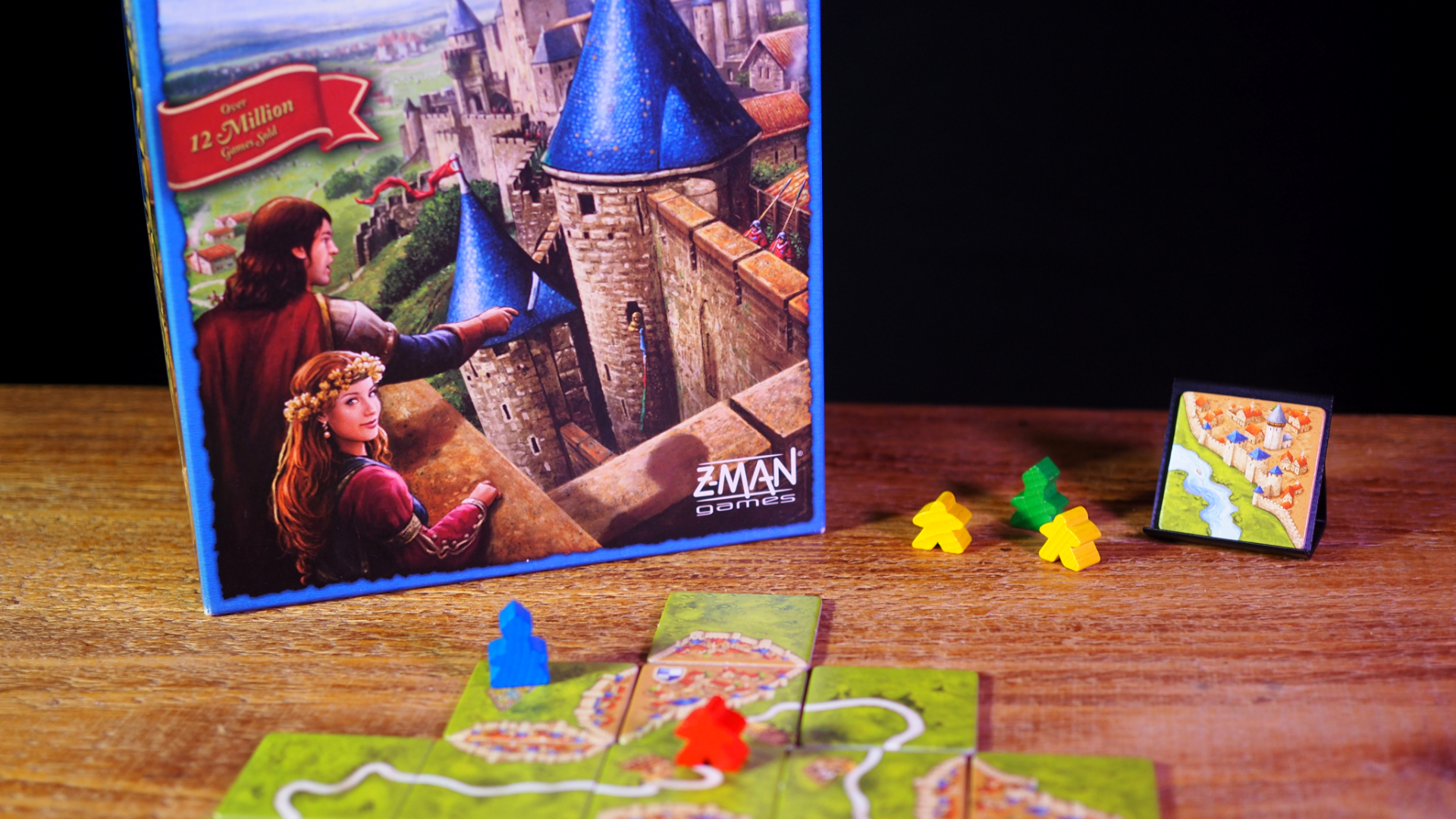
Specifications
Reasons to buy
Reasons to avoid
Carcassonne is seen as one of the best classic board games for good reason; even though it's now available on a ton of digital platforms, there’s something special about playing the game in its original, physical format that can't be beaten. Seriously, dropping a tile in exactly the right place to earn points is weirdly satisfying.
There are plenty of expansions to keep you busy once the core game has lost its shine, too. These add-ons include everything from castles and kings to mayors, so you should have plenty to chew on.
✅ You want something short: Matches of Carcassonne rarely last longer than 30 minutes, so it's a great option if you're short on time.
✅ You don't want a tactical game: If you aren't a fan of strategizing or analysing every move before you make it, the easy-going Carcassonne will appeal.
❌ You want something strategic: This game isn't particularly deep, so anyone that enjoys a more cerebral challenge will be left cold.
❌ You hate randomization: Luck of the draw plays a huge role in Carcassonne's gameplay.
Features & design: Created in 2000 and inspired by the walled medieval town of the same name, Carcasonne's board is created as you play. Everyone fills out a section of Southern France using tiles drawn at random, and placing meeples – little wooden people – earns you points for each completed city, road, or connected field. It's a simple concept, and one
Regardless of what happens, you can be guaranteed a rather handsome tapestry of tiles by the end of a match. Some may not like how the layout doesn't necessarily make sense (roads to nowhere, here we come), but it's a delightful patchwork of medieval life nonetheless.
Gameplay: Carcassonne is laid back by design, so it's a good family board game for those who want a more relaxing time around the table. That doesn't mean it's challenge-free, though. Having a strategy in mind while placing your pieces is crucial. Although luck of the draw is involved, leaving yourself enough space to finish landmarks is a challenge in itself.
It's oddly relaxing to create a sprawling medieval landscape, making this ideal for a lazy Sunday afternoon
Benjamin Abbott, Tabletop & Merch Editor
Similarly, you can cut into a rivals' space or share control of their cities by linking your unconnected town with theirs. This ability to think on your feet and plan for possible moves keeps the game interesting. Plus, there's a lovely social element at play here because you're all contributing to the same, shared board.
It won't occupy strategy gamers for long, but there's something satisfying about cashing in a chain of meeples as well. Carcasonne is the kind of game where the leaderboard can shift very quickly, especially if you embrace chaos and try to sabotage other players.
Criteria | Notes | Score |
|---|---|---|
Game mechanics | This is a phenomenally easy-going game, so even though it's not going to tax strategy aficionados, it's ideal as a casual family game. | 3/5 |
Accessibility | You can explain Carcassonne and start playing within moments. | 5/5 |
Replayability | It's not going to keep you entertained forever, but its randomly-drawn tiles mean that you'll always have a different experience each time. | 4/5 |
Setup and pack-down | Carcassonne starts simple with a single tile being placed, so the biggest challenge is shuffling them ahead of play. Packing away is a bit more involved because you'll have crafted an enormous cardboard mosaic, of course. | 4/5 |
Component quality | Thanks to sturdy cardboard tiles and economic but effective meeples, Carcassonne is built to last. | 4/5 |

"This map-building classic is fun for the whole family. It's a gateway game that can ease even the most reluctant board gamers into the hobby with a simple dominoes-like ruleset that's layered with fascinating area control mechanics. Definitely one for the collection." Read more: Carcassonne review
How to choose family board games
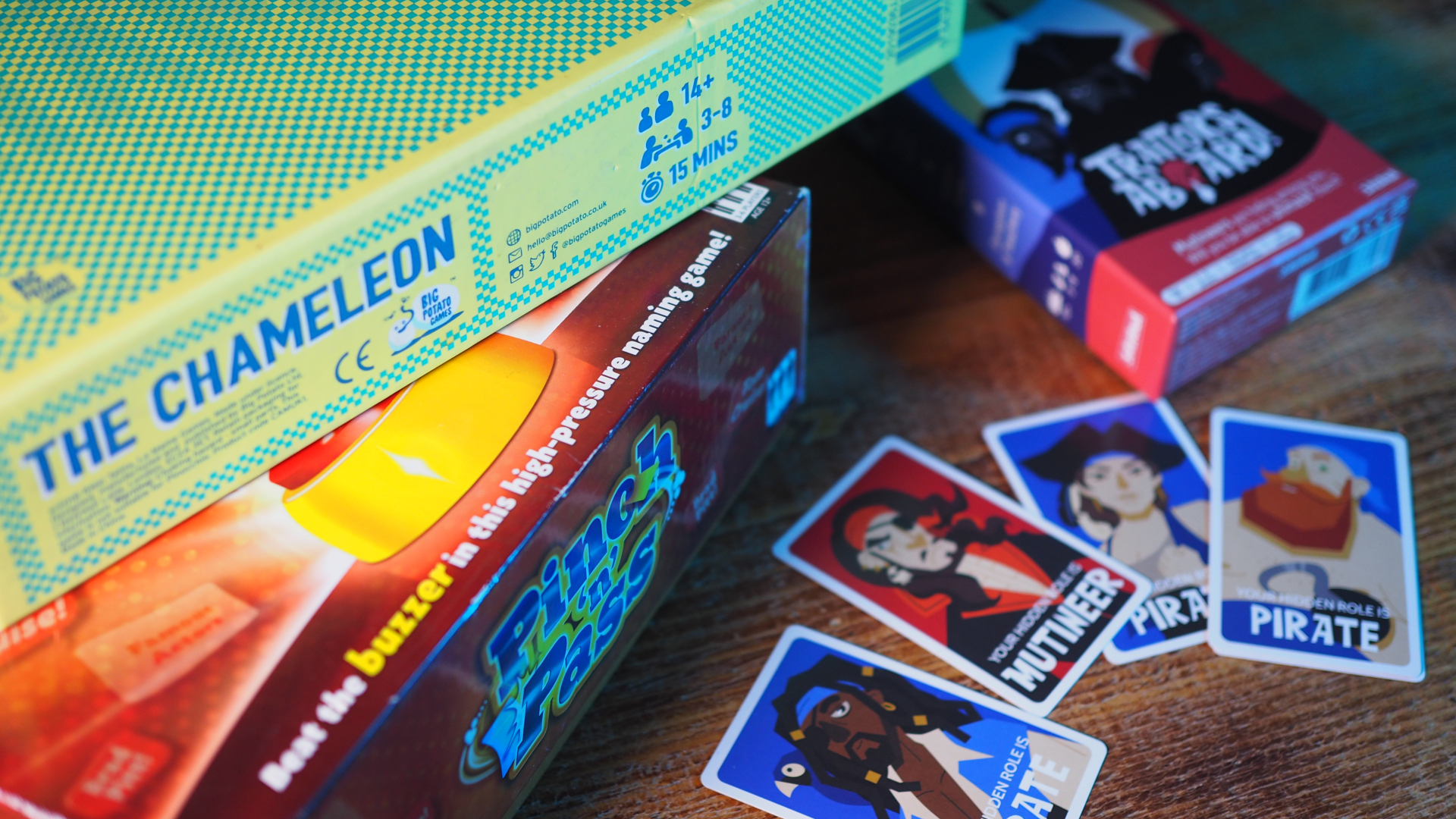
If you're not sure what you're in the mood for, don't worry - the GamesRadar+ team and I have some advice. We've been doing this for a long time now (I started writing about family board games for the site in 2018 and have played them since I was knee-high), so let us impart some hard-won wisdom that'll narrow things down.
Here's what I tend to ask when recommending games for families:
🏆 Are your family board gamers?
Knowing how much experience your players have with tabletop gaming is always helpful. If they've never played anything beyond Sorry, I wouldn't break out Wingspan. Go for something light and breezy like Herd Mentality instead.
🕐 How much time do you have?
If you can figure out how long you've got to play, you can narrow the list of candidates down significantly. Short on time? Avoid something like 7 Wonders and go for a party game like Sushi Go or Exploding Kittens instead.
🎲 What games do you already enjoy?
Honestly, this might be one of the best ways to figure out what you want. If you hate murder mystery games, for example, something like 221B Baker Street won't appeal. Love trading games? Catan will be up your street. Pinning this down helps an awful lot.
👨👩👦 How many players are there going to be?
I know it's obvious, but this is a good question to ask when choosing the best family board games. If there are only two or three of you, getting something like Articulate (which requires four players at minimum) won't work. Equally, you're sunk if you try and play something like Sushi Go with eight people. Every entry on this list has the player count displayed prominently up top, allowing you to find a suitable option right away.
📆 What ages are the players?
Here's another obvious consideration, but one you shouldn't ignore. While a game's age-rating can refer to the suitability of the content within (exactly like movies), it can also be a helpful way to judge whether young children will struggle or not from the off - it hints at complexity. I wouldn't wheel out Catan for a kindergartner, for instance.
Want an overview of what's available, on the other hand? It's worth dropping in on our guide to the many types of board games. Besides filling you in on terms and genres that can be confusing unless you're a hobby veteran (like Eurogames), it's crammed with suggestions that could spark inspiration.
How we test board games for families
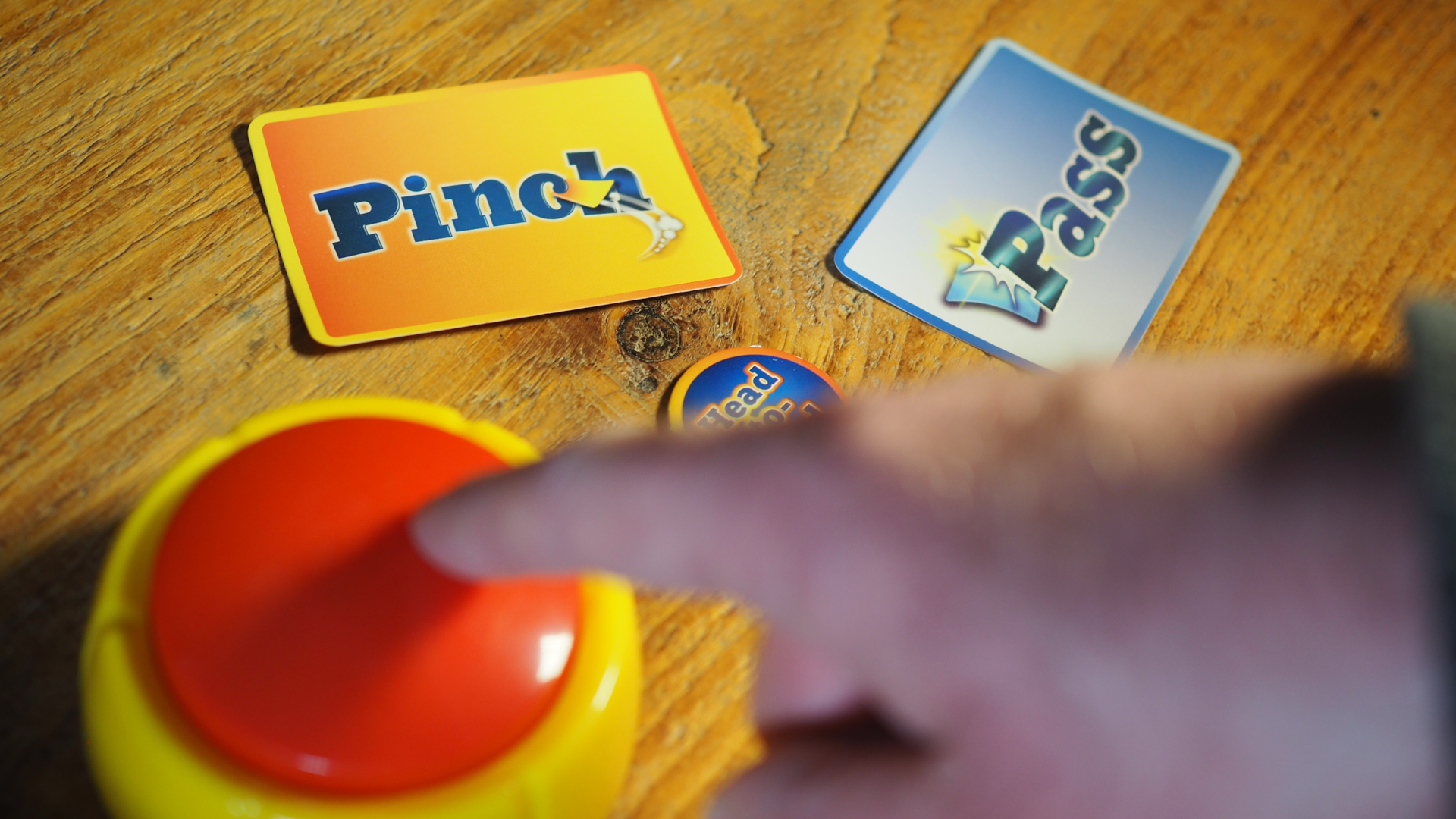
How we test board games is incredibly important to the entire GamesRadar+ team, and we won't ever suggest a product we wouldn't be happy to buy ourselves. Basically, we need to love something for it to get on this list of family board games.
As discussed in our guide to how we test board games, our reviewers (who have years of experience covering the industry) live and play with a game for as long as possible to get the best sense of how it works. This helps us establish whether it'll be a five-minute wonder or not as well.
For much the same reason, we'll always run multiple sessions with different numbers of people to get an idea of how this changes the experience - if at all.
Our critique is then divided into four distinct sections:
- Features & design: We give you the lowdown on a game's 'elevator pitch' in this section (basically, what does it do differently?). We then go into the basics of how it actually works, along with a judgement on its physical components.
- Gameplay: Most of our review will focus on the actual mechanics of a game. We weigh in on what the experience of playing it is like, whether it's fun, and things we weren't so keen on.
- Should you buy: This section rounds up our thoughts on the family board game in a bite-size format. You'll also find an itemized list of reasons to buy or not to buy here.
- How we tested: We then go into how we tested the game in question, for full transparency.
You'll also see the following standardized set of criteria throughout our reviews and buying guides - a ranking system based on gameplay, accessibility (how easy it is to understand and get into), setup and pack-down, component quality, and how replayable it is. Here's a quick example:
Criteria | Notes | Score |
|---|---|---|
Game mechanics | How fun are the game's core systems? | ?/5 |
Accessibility | Is the game easy to understand and get into? | ?/5 |
Replayability | We discuss whether the game has longevity here. | ?/5 |
Setup and pack-down | Our writers go into the process of setting up and putting away a game in this section. | ?/5 |
Component quality | Are the tokens, cards, and more of a good quality? | ?/5 |
For more information on our process sitewide, be sure to see the GamesRadar+ review policy.
Board games for families FAQ
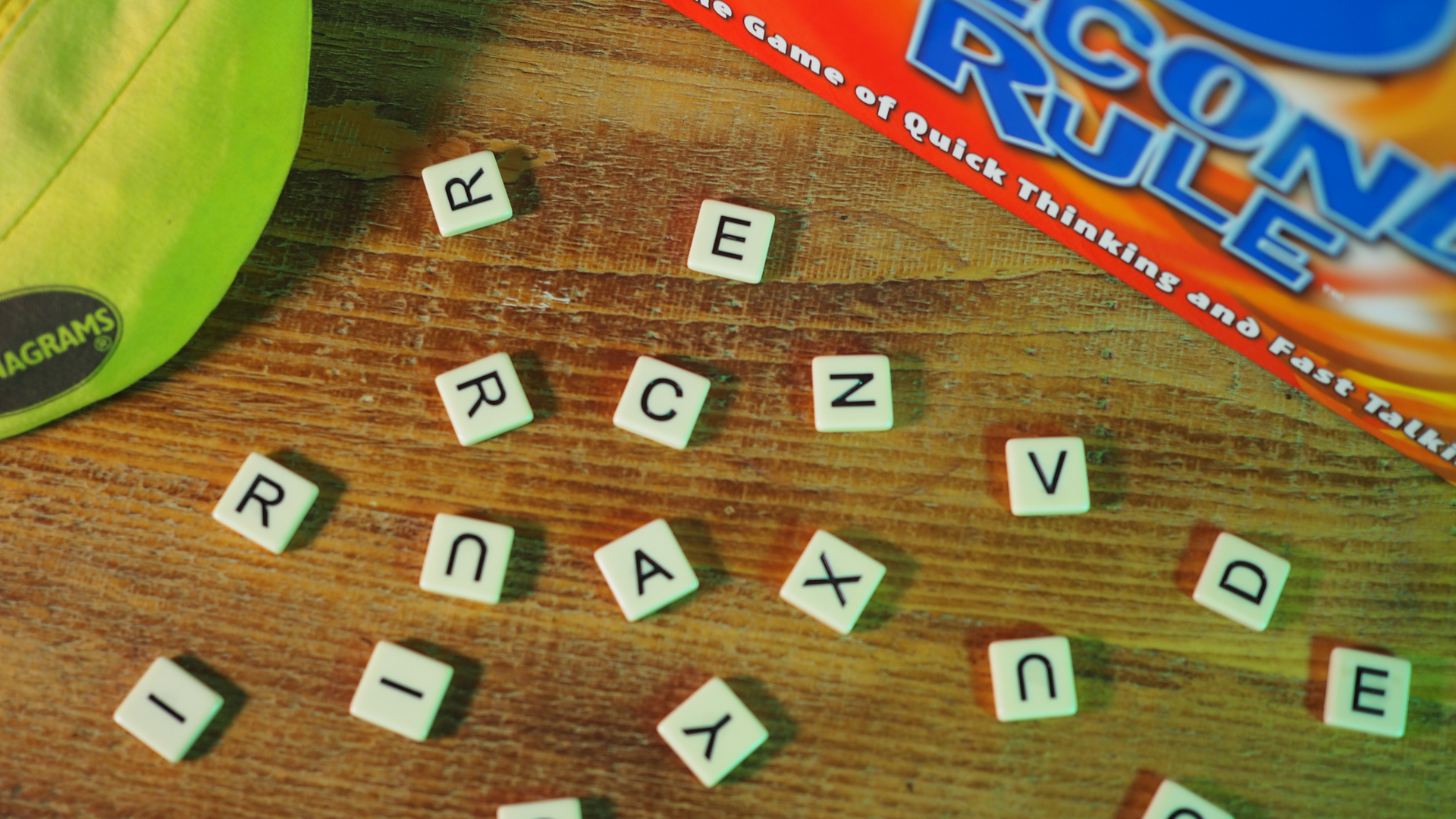
What is the best game to play as a family?
There are a wealth of board games for families these days, and store shelves groan under the weight of them all. However, I'd always recommend ignoring these and trying Ticket to Ride first. It's a gentle game that doesn't require a lot of brain-power, but has enough strategy to keep you invested. It's not so competitive that you'll have everyone falling out, either - always a plus so far as I'm concerned.
Herd Mentality is also a favorite in terms of family board games. It's easy to get into and doesn't put pressure on its players; you're all submitting your answers at once rather being put on the spot individually. This makes it ideal for those who don't like the attention that comes with certain games. At the same time, it's easy-going fun that won't leave you feeling bored.
What are top 5 family board games?
While there are countless family board games on offer right now, a few rise above the pack. You'll find our experts' personal favorites on this page, but here's a shortlist:
- Ticket to Ride
- Herd Mentality
- Sushi Go
- Wingspan
- Articulate
- Carcassonne
It's a slightly different story if you're talking about sales, though. I've checked against different sources and my research indicates that chess, checkers, Monopoly, Scrabble, and Clue make the most money each year. Risk, Trivial Pursuit, and Battleship follow close behind them.
Another good metric would be the Amazon bestsellers list. In our most recent search, I was surprised to find that younger entries like Codenames topped the list. Not that I'm complaining, of course; that game is brilliant. Wingspan and Ticket to Ride (two games that actually feature on our roundup of the best family board games) make the cut too.
Are board games good for families?
Board games are an incredibly healthy pastime for families. As mentioned in our guide to how board games help cognitive health, they're a tremendous way to improve social skills, problem-solving, and more. In the piece mentioned above, Game to Grow founder Adam Davis told us that board games build "frustration tolerance, working and sharing with others, logical sequencing, cognitive flexibility, imaginative thinking, and appreciating the unexpected."
For more suggestions on what to play next, be sure to check out our guides to the best card games and classic board games everyone needs in their collection.
Sign up to the GamesRadar+ Newsletter
Weekly digests, tales from the communities you love, and more

I've been writing about games in one form or another since 2012, and now manage GamesRadar+'s tabletop gaming and toy coverage. You'll find my grubby paws on everything from board game reviews to the latest Lego news.
